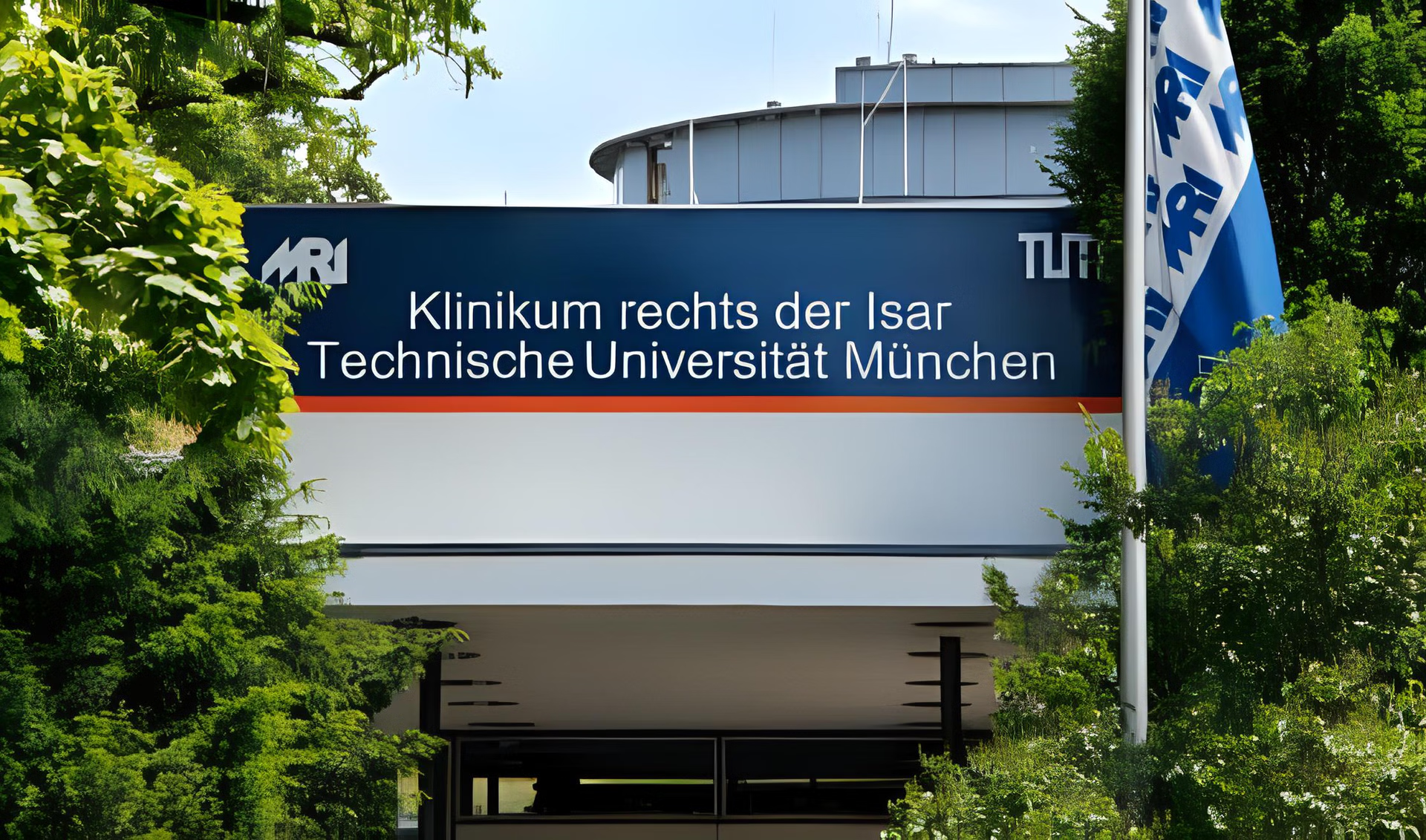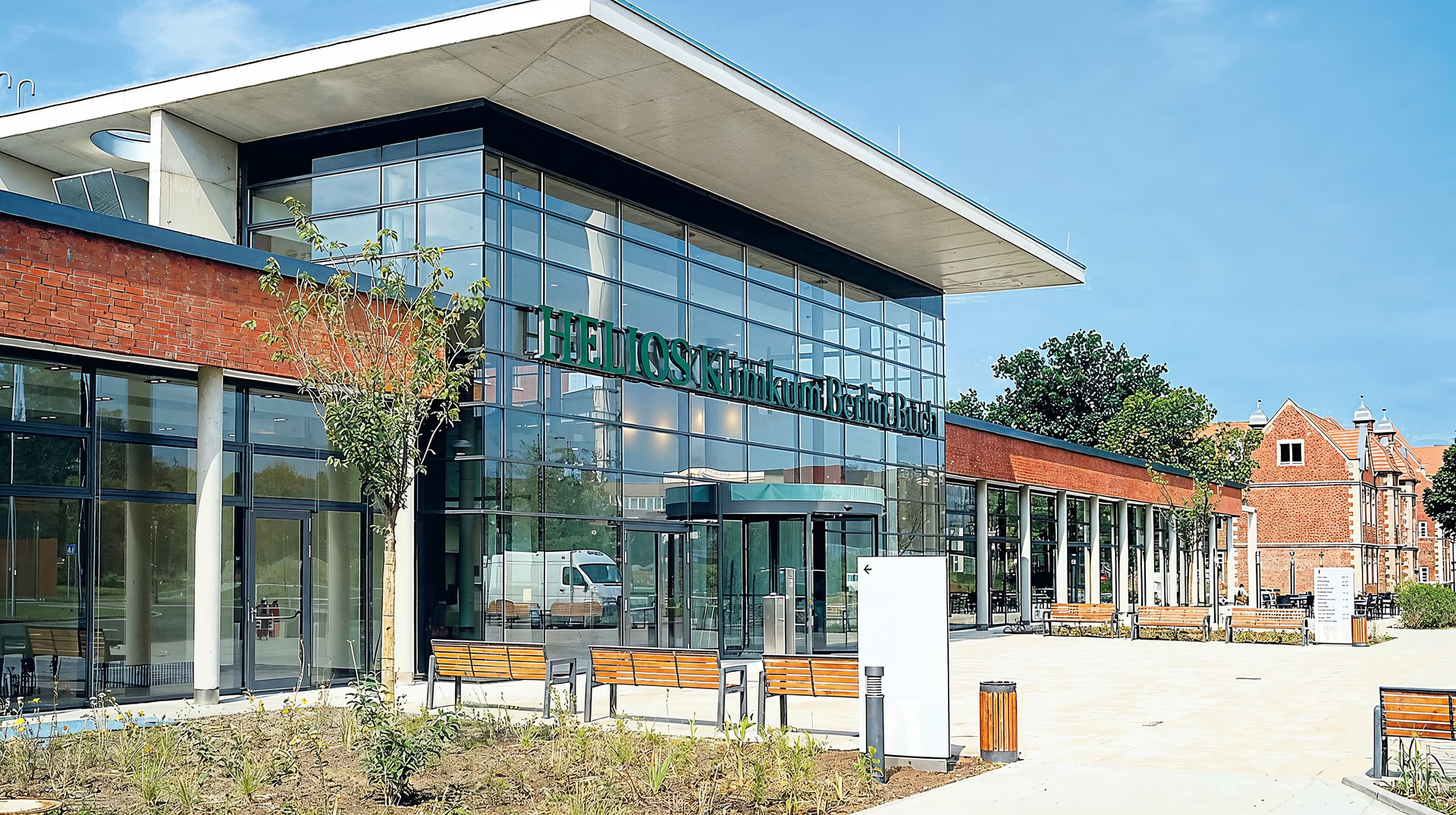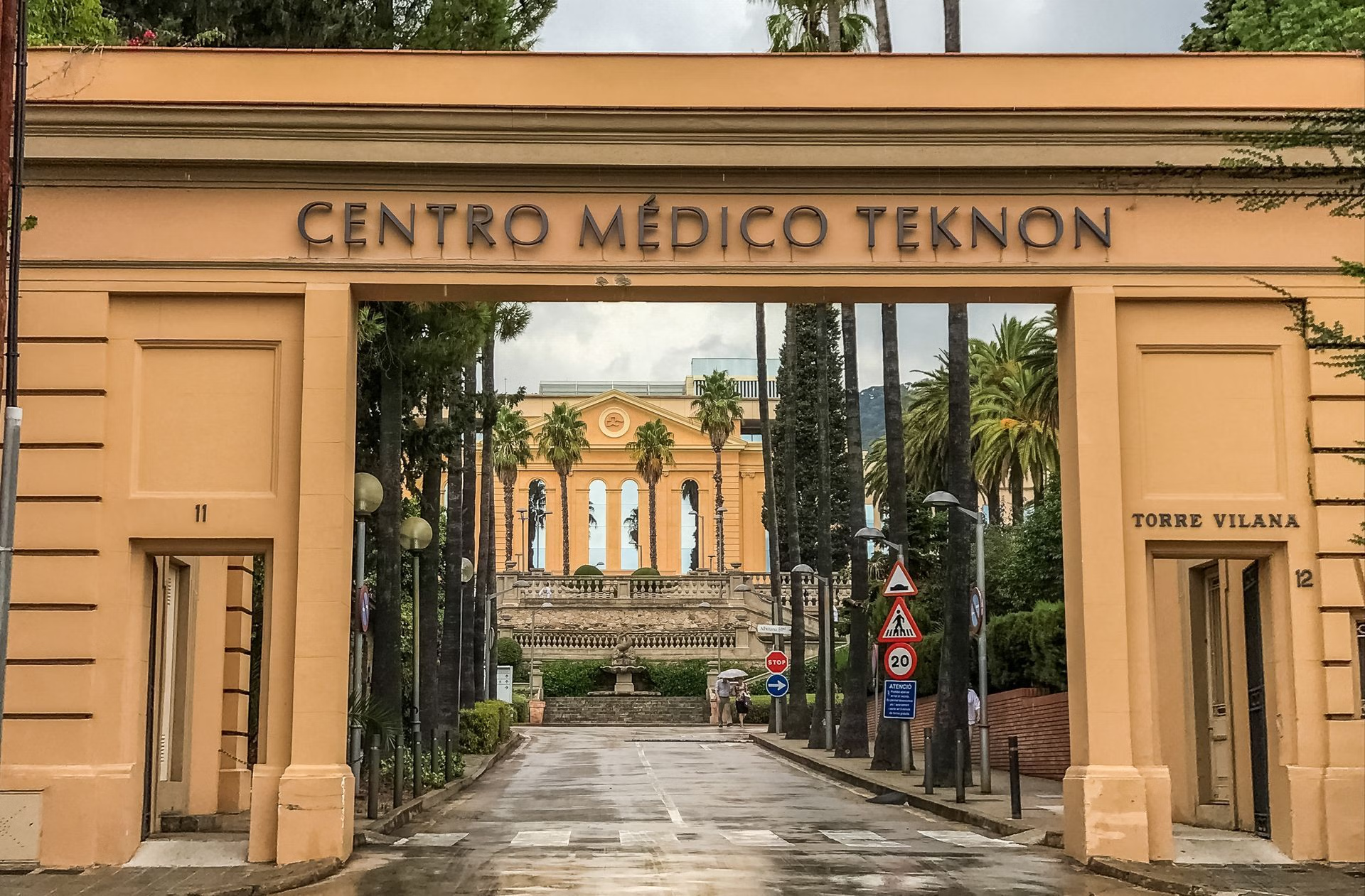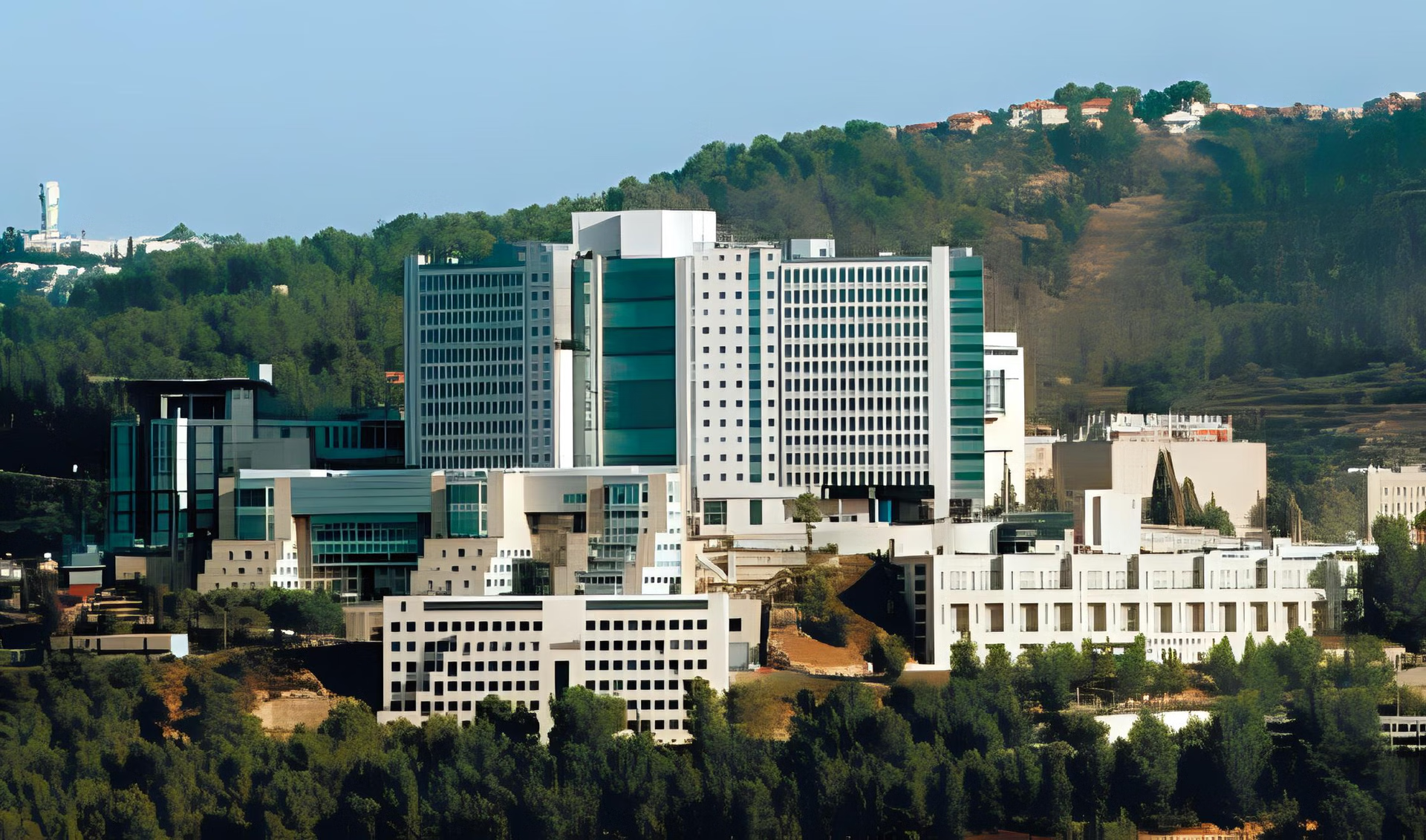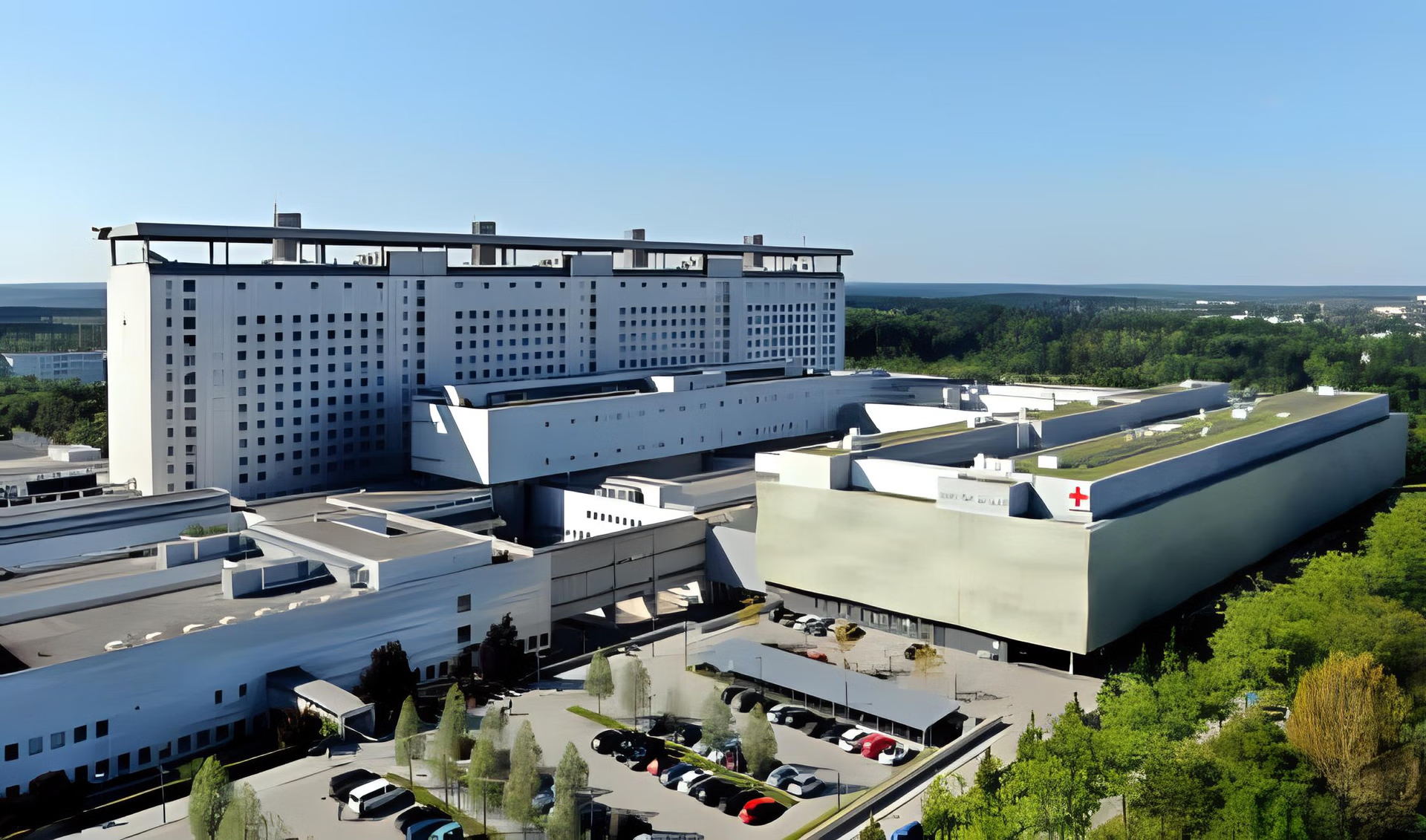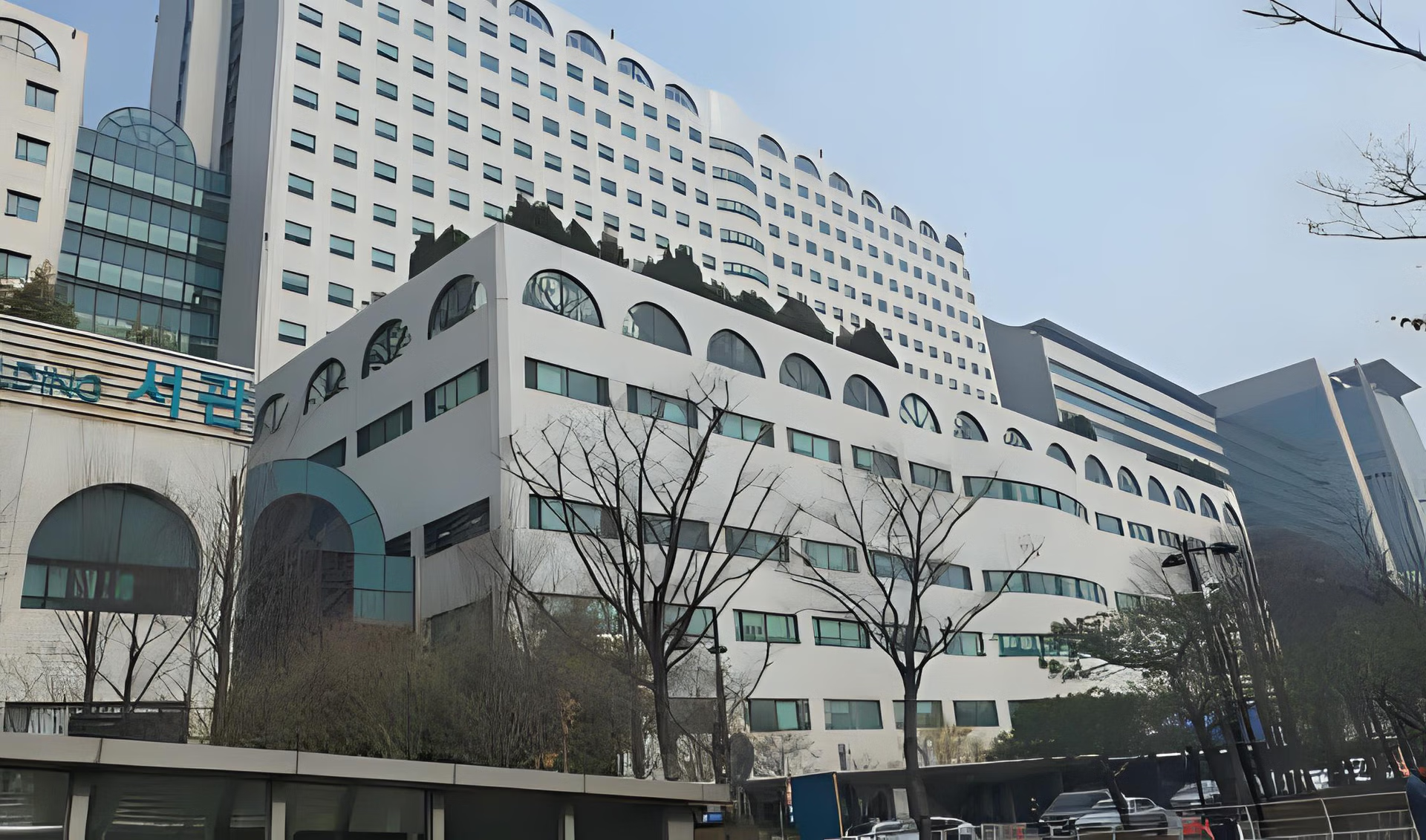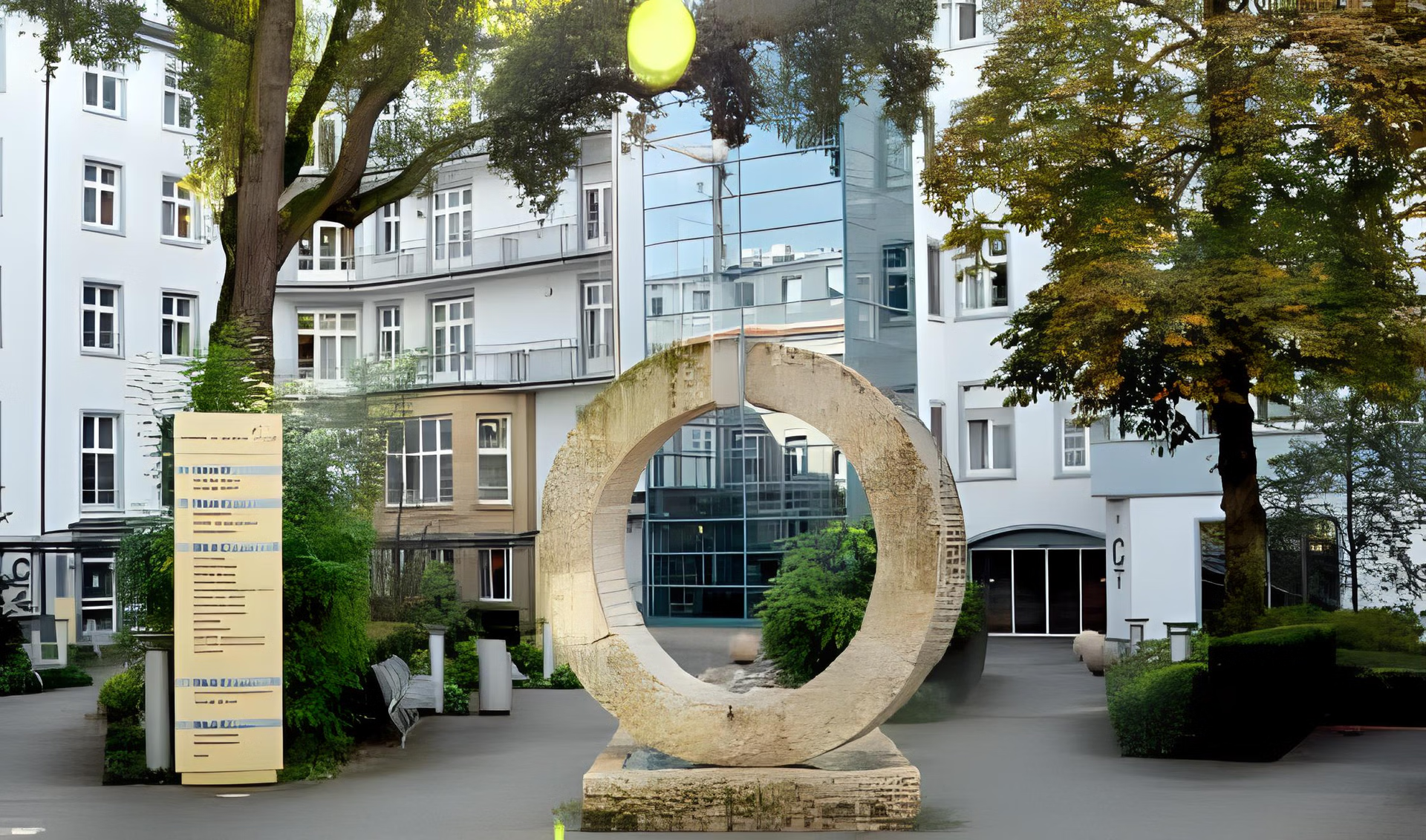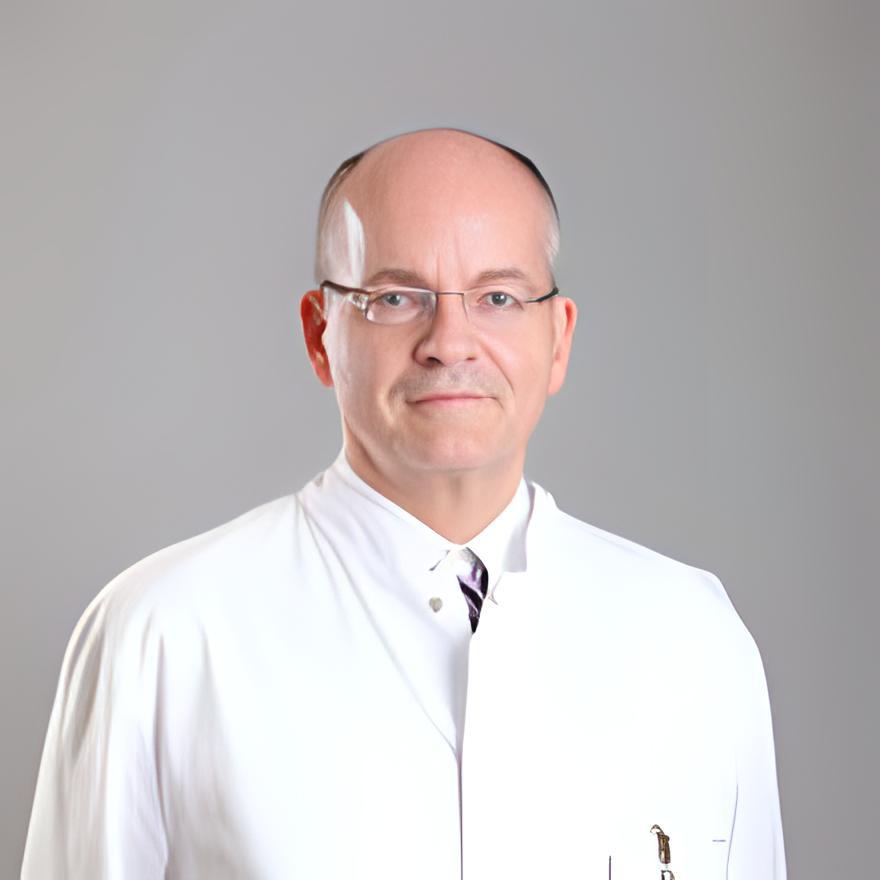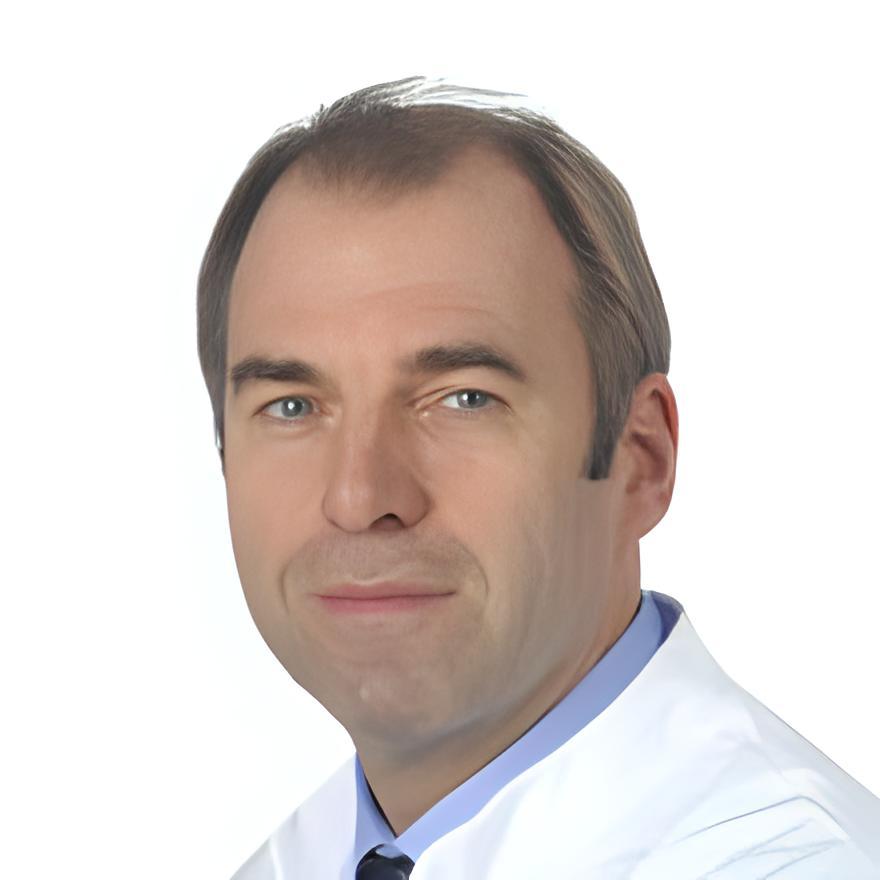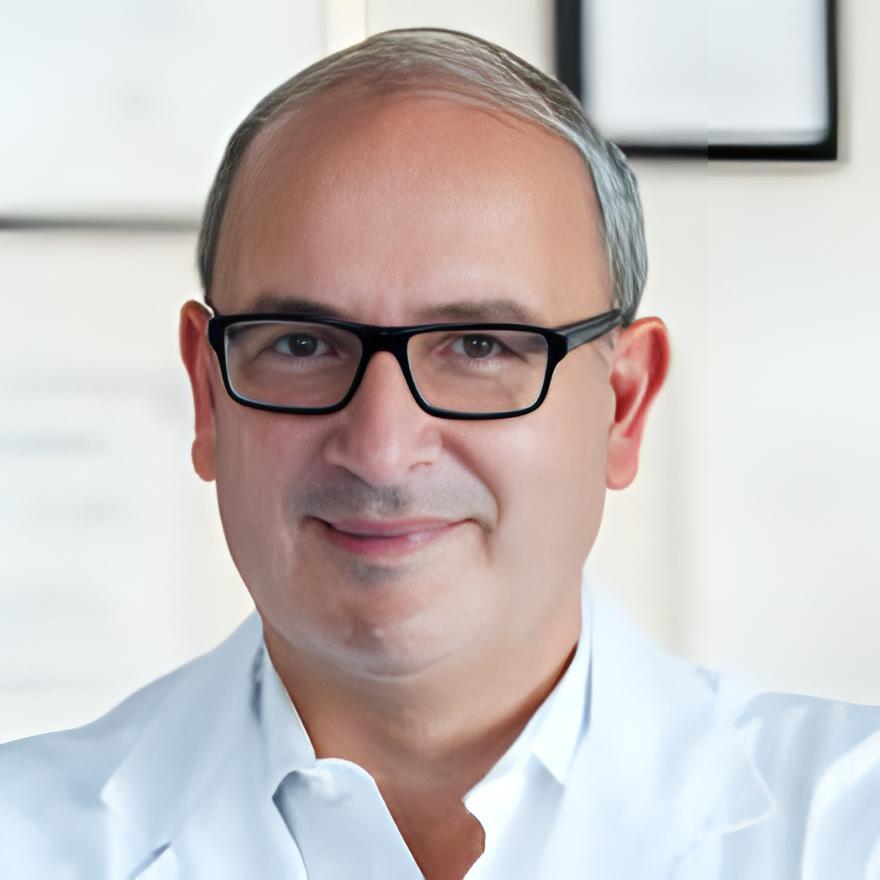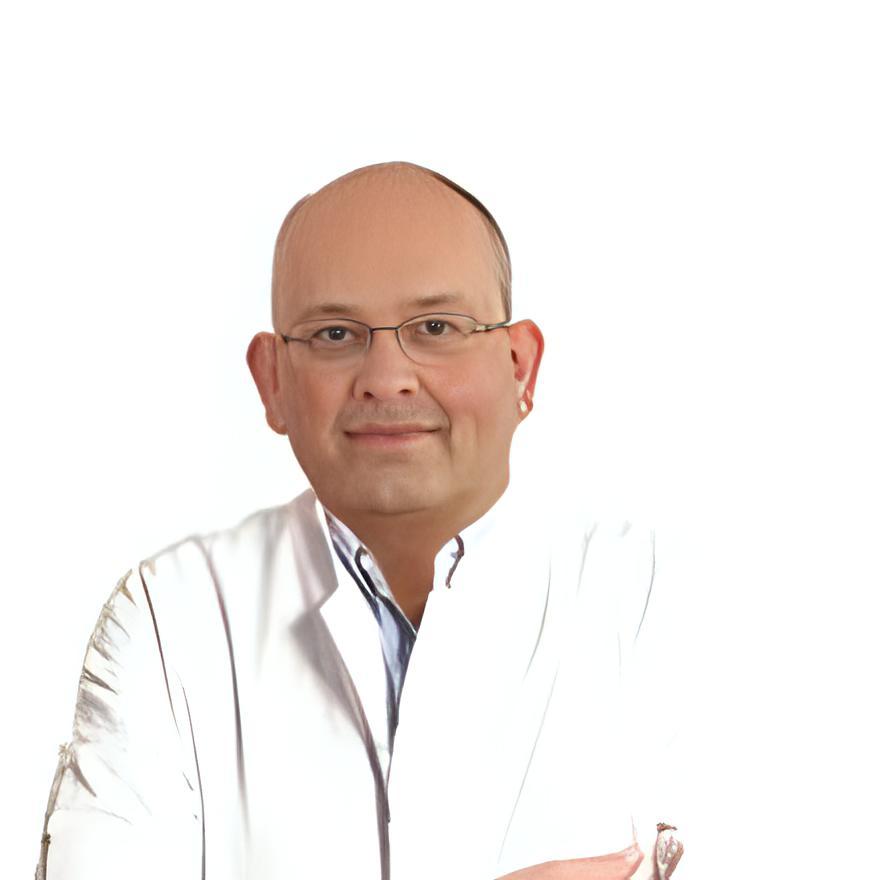Bile Duct Cancer (Cholangiocarcinoma) Guide

Family history is not a significant risk factor for this type of cancer.
The 5-year survival rate with early diagnosed cholangiocarcinoma is 17%.
The risk of cholangiocarcinoma in people with primary sclerosing cholangitis varies by 7-40%.
Multimodal treatment, with chemo, radiation, and liver transplantation, raises the survival to 40-50%.
 What are the bile ducts, and how do they work?
What are the bile ducts, and how do they work?
Bile duct tubes link “the source” – the liver, “the storage” — the gallbladder, and the small intestine — “the place of arrival.”
This network starts in the liver, where bile is collected by many tiny tubes (as you know, bile is a fluid that breaks fat down). When the small ducts come together, they form the right and left hepatic ducts, which are bigger and lead out of the liver. Outside the liver, the two tubes combine to make the common hepatic duct. The gallbladder is linked to the common hepatic duct by the cystic duct. Bile from the liver goes to the gallbladder through hepatic ducts, the common hepatic duct, and the cystic duct.
When food is broken down, the gallbladder releases bile stored there. The bile goes through the bile ducts into the small intestine. And cholangiocarcinoma can start from anywhere in this system.
 What is bile duct cancer?
What is bile duct cancer?
Cancer of the bile duct, also known as cholangiocarcinoma, can happen anywhere in the bile duct. Cholangiocarcinoma occurs when healthy cells in the bile ducts change and divide out of control, forming a tumor mass. Cancer can then move to other organs.
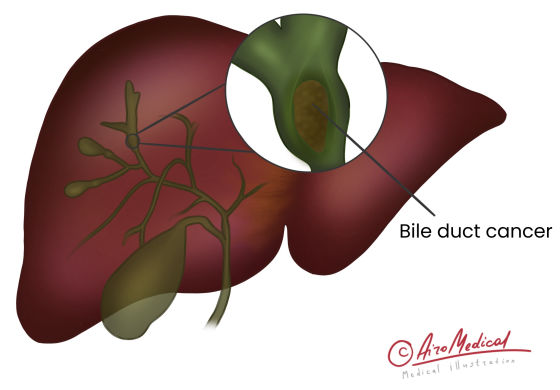 Cholangiocarcinoma comes in three forms:
Cholangiocarcinoma comes in three forms:
- Extrahepatic cholangiocarcinoma is a tumor that is outside the liver. The growth could be in the ducts where they leave the liver. Or it starts at the end of the ducts in the small intestine. It is the most common and treatable type of bile duct cancer.
- Intrahepatic cholangiocarcinoma is a cancer of the bile ducts that are located in the liver. This form begins in the liver but is not the same as liver cancer.
- Perihilar cholangiocarcinoma starts where the left and right hepatic ducts meet. They are also known as cancers of the hilar area.
Even though biliary tract cancer is rare, the number of cases has increased. A recent study in the Journal of Cancer demonstrates that the number of people getting cholangiocarcinoma is growing worldwide. From 1990 to 2017, researchers made the observation. During this time, the number of cases went up by 76%, and the number of deaths went up by 65%. These results led doctors worldwide to work on ways to find cholangiocarcinoma early, keep it from happening, and treat it.
 What are the risk factors of cholangiocarcinoma?
What are the risk factors of cholangiocarcinoma?
Oncologists state that cancer in the bile duct is aggressive tumors, so-called fast-growing, and hard to treat. Therefore many physicians recommend regular screening based on family history and present risks. Such an approach helps prevent the disease in many patients and leads to early cholangiocarcinoma detection for some individuals. The following factors might onset a tumor:
- Primary sclerosing cholangitis (PSC) is more likely to lead to cholangiocarcinoma. Most of the time, the cause of the disease remains unknown.
- Stones in the bile duct, similar to gallstones but much smaller, can also lead to inflammation, raising the risk of cholangiocarcinoma.
- Choledochal cyst disease is a rare condition that is sometimes present at birth. There are often pre-cancerous changes in the cells of the duct wall. Over time, these changes can lead to cholangiocarcinoma.
- Liver flukes invasion affects the bile ducts of people and can cause bile duct cancer.
- Reflux disease occurs when the bile duct and the pancreatic duct don't connect the way they should, and digestive juices from the pancreas can flow back into the bile ducts.
- Cirrhosis is scar tissue that has damaged the liver. Alcohol and diseases like hepatitis can make it worse. Studies have shown that it makes cholangiocarcinoma more likely.
- Infection with the hepatitis virus raises the risk of cholangiocarcinoma, caused inside the liver. It may be partly because these viruses can lead to cirrhosis.
- Inflammatory bowel diseases (IBD), like ulcerative colitis and Crohn's disease, are both types of inflammatory conditions. Such people are more likely to get cholangiocarcinoma.
- Older age is a significant risk factor. Most patients are in their 60s or 70s.
- Ethnicity and where people live. Cholangiocarcinoma is more common in Southeast Asia and China. It is mainly because liver flukes are so common in these places.
- Obesity is a risk factor for gallbladder and bile duct cancers. It could be because being overweight makes a person more likely to get gallstones, bile duct stones, and non-alcoholic fatty liver disease.
- Non-alcoholic fatty liver disease occurs when fat builds up in the liver cells that isn't caused by drinking too much alcohol. Over time, this can lead to swelling, scarring, and even cancer.
- Family history. People seem more likely to get cholangiocarcinoma if someone in their family has had it, but most people who get bile duct cancer do not have a family history.
- Alcohol cause intrahepatic cholangiocarcinoma is more likely to happen. People who drink alcohol and have liver problems are more likely to get sick.
Other things could be a risk. Studies have found such things that might make bile duct cancer more likely, but the links are unclear. These are:
- Smoking,
- Long-term inflammation of the pancreas,
- AIDS,
- Exposure to radioactive chemicals like radon and toxins (dioxin, nitrosamines, polychlorinated biphenyls, etc.)
 Are there early signs of the problem?
Are there early signs of the problem?
There are no signs or symptoms of bile duct cancer until the later stages. However, sometimes symptoms can show up earlier. If the tumor is found on time, treatment might be more effective.
When cholangiocarcinoma does show symptoms, it is usually because a bile duct is blocked. Symptoms rely on whether the cancer is — in ducts inside or outside the liver. They include:
- Jaundice appears if the bile flow is blocked (typically, the liver makes bile and sends it to the intestine). When a chemical called bilirubin, which makes it look greenish-yellow, gets pushed back into the bloodstream and ends up in different body parts. People with jaundice often have yellowing skin and eyes. Most people with cholangiocarcinoma symptoms will have jaundice, but most jaundice isn't caused by cancer. Mostly, hepatitis or a gallstone that has moved to the bile duct is to blame.
- Itching can also be caused by too much bilirubin in the skin. Itching is one of the most often bile duct cancer symptoms.
- Stools are light and greasy because bilirubin makes feces brown, so a person's stool might be lighter if it doesn't get to the intestines. Suppose cholangiocarcinoma blocks bile and pancreatic juices from getting into the intestine. Fat that hasn't been broken down can also make stools look pale. It is one of the widespread bile-duct cancer symptoms.
- Dark urine is a result of increased bilirubin in the blood. It can arrive in the urine and make it dark.
- Pain in the stomach rarely occurs. Early cholangiocarcinoma doesn’t usually hurt. Still, larger tumors can cause pain in the belly, significantly below the right ribs.
- Loss of appetite/ weight is an effect of tumor growth and poisoning. Cholangiocarcinoma causes loss of feeling hungry, and a person may lose weight without even trying to.
- Fever may occur in some people.
- Feeling sick and vomiting are not typical signs but can happen when a blocked bile duct causes cholangitis infection. A fever is often present along with these signs.
Remember that bile duct cancer is rare. Other reasons are much more likely to cause these symptoms. For example, people with gallstones have many of the same signs. And cholangiocarcinoma is a much less common cause of stomach pain than many other things. Also, a much more common cause of jaundice is hepatitis, an inflamed liver usually caused by a virus infection.
Still, if you have any of the symptoms listed above, you should see a doctor as soon as possible so that the cause can be found and, if necessary, treated.
 How to determine if someone has cholangiocarcinoma?
How to determine if someone has cholangiocarcinoma?
There are many ways to diagnose. All of the tests described here are optional for everyone. Choosing a diagnostic test, the doctor may think about the type of cancer, the general condition, and the result of the previous examination.
The physical exam combines the following diagnostic blood tests may be used:
- Blood chemistry tests look at how the liver works. If any of these substances are at an increased level, it could mean that the bile duct isn't working right.
- Tumor marker tests (CEA and CA19-9) look for specific substances. If someone has cholangiocarcinoma, the blood may have a lot of carcinoembryonic antigens (CEA) and CA19-9. But a person can still have the disease even if these tumor markers are standard.
These are other tests done to find out more about cholangiocarcinoma:
- Biopsy. A biopsy is a method in which a small tissue sample is looked at under a microscope. During an endoscopic retrograde cholangiopancreatography procedure, the doctor can also take tissue samples (ERCP). Sometimes, a biopsy can't be done. In this rare case, people with cholangiocarcinoma will be treated based on the results of other tests and their symptoms.
- Ultrasound makes a picture of the organs inside the body by using sound waves. A doctor might be able to see the cholangiocarcinoma during an ultrasound. It can help a biopsy; endoscopic or laparoscopic ultrasound makes it easier to see the bile duct.
- During an ERCP, a flexible tube is put down from the patient's throat to the bile duct. The tube is filled with dye, which makes the bile duct stand out on an x-ray. Doctors can use this method to determine the tumor and take a sample.
- CT or CAT scans with X-rays taken from different angles are used in a CT scan to take pictures of the body. A computer makes a detailed 3-D image showing abnormalities or tumors like cholangiocarcinoma. Before a scan, sometimes a special dye called a "contrast" is used to make the image clearer.
- Magnetic resonance imaging (MRI) does not use x-rays to make detailed pictures of the body. Instead, it uses magnetic fields. MRI cholangiopancreatography looks at the bile duct.
- Percutaneous transhepatic cholangiography (PTC) is a procedure that uses x-rays to look at the bile ducts. The doctor puts a thin needle into the liver and bile ducts through the skin. The pancreas, gallbladder, and bile ducts are all looked at with x-rays. A PTC is usually done if the patient can't have an ERCP.
- Laparoscopy helps a doctor look at the bile duct, gallbladder, and liver through a light-filled laparoscope. It is put into the abdomen through a tiny surgical cut. With some laparoscopes, the doctor can use small instruments to take a tissue sample from the suspicious place.
- Tests for biomarkers on the tumor help to determine what genes, proteins, and other things are unique. It could also be called testing the tumor's molecules.
After diagnostic tests, the doctor will review the results with the patient.
Stages of cholangiocarcinoma
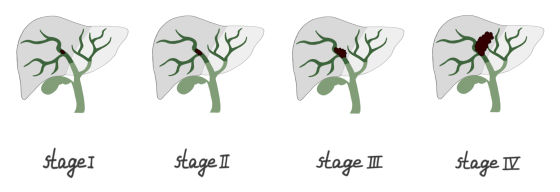
- In the first stage, the tumor is located only in the bile duct and has not spread to other body parts. Or, they've grown into the wall of the bile duct.
- At stage 2, cholangiocarcinoma could present with more than one tumor. It may have spread to the tissues around it, and there may be cancer cells in nearby lymph nodes.
- Stage 3 neoplasm has spread to the blood vessels, the gallbladder, the pancreas, and lymph nodes; all make up the body.
- At stage 4, the neoplasm has spread to other body parts. The liver and lungs are two places where cholangiocarcinoma often metastasizes.
Where to go to treat cholangiocarcinoma?
 Methods of care
Methods of care
Cholangiocarcinomatreatment plans depend on where the cancer is and how far it has spread. Surgery may only be a good idea early on. But by the time most cases are found, they have already extended. In these situations, it is best to use more than one treatment.
The most common ways to treat cholangiocarcinoma:
Systemic chemotherapy uses drugs that kill cancer cells in the body. These drugs are called cytotoxic (microscopic cancer cells in the intestines or lymph nodes). Systemic chemotherapy may also shrink the tumor and make it possible to do more surgery.
Immunotherapy: In fighting against cholangiocarcinoma cells, drugs boost a person's immune system.
Targeted therapy is aimed at specific parts of cancer cells. An abnormal gene that makes proteins causes bile duct cancer. Targeted therapy can find these cells and stop them from growing.
Radiation therapy uses high-energy x-rays to treat the affected area. Radiation kills cholangiocarcinoma cells while hurting other tissues as little as possible.
Surgical treatment can be performed in the cases of resectable and unresectable tumors. If it is possible to remove the tumor altogether, surgeons use the following:
- Removal of the bile ducts: If cholangiocarcinoma hasn't spread, part of the affected bile ducts are cut out.
- Partial or lobe hepatectomy means the removal of the affected liver tissue in a portion of the liver. It occasionally requires removing the liver's right or left lobe. Hepatic lobectomy is a complex surgery that requires experienced surgeons.
- Whipple surgery removes the bile duct, gallbladder, and part of the pancreas, stomach, and small intestine. Whipple surgery is used for extrahepatic cholangiocarcinoma and requires excellent surgical skills and experience.
- Liver transplantation is used in some patients with early-stage cholangiocarcinoma that can't be removed. It might even cure cancer in some cases. But there aren't many livers for people with cancer. The option is to get a part of the liver from a living donor. Cancer could be treated with chemotherapy and radiation first. Using the combined method, the results of clinical trials have been promising.
- Palliative surgery relieves symptoms or treats (or prevents) problems like obstructed bile ducts in cholangiocarcinoma cases. When cancer has progressed too far, this operation is performed. It doesn't cure cancer but it can help patients feel better and survive longer. There are:
- Bile bypass is when the surgeon connects the bile duct before and after the tumor to bypass it. Gallbladder bypasses are common. The bypass enables bile flow into the intestines, reducing jaundice and itching.
- Stent placement is inserted if a bypass isn't possible. The stent in the bile duct maintains it open and keeps the bile flow.
As with other types of cancer, the treatment for bile duct cancer is different for each person. So, the medical team needs to know what treatments are available, such as therapy vs. palliative care or controlling symptoms and quality of life.
What clinics perform diagnostic and treatment?
 Innovative treatments
Innovative treatments
Different doctors collaborate to create a treatment plan for cholangiocarcinoma patients. The combined treatment strategy will include individualized molecular-based treatments. Symptoms and adverse effects are treated as part of bile duct cancer treatment.
Methods:
- Transarterial chemoembolization (TACE) involves injecting a chemotherapy drug directly into the affected ducts locally (through the vasculature), blocking (embolization) the blood arteries that feed the tumor node to cut off the blood supply and keeping chemo inside it.
- Transarterial chemoperfusion (TACP) - Chemotherapy beads are implanted into the tumor's blood arteries using a catheter. The dots stop blood from reaching cholangiocarcinoma. The balls produce chemotherapeutic medicines that shrink cancer.
- Ablative therapy (RFA, MWA, Ethanol) includes radiofrequency, microwave, and ethanol injection. The first two employ heat to eliminate cholangiocarcinoma cells passing through an organ needle. RFA uses electric currents, and MWA uses electromagnetic waves. The cancer is then killed by injecting ethanol (through the skin).
- Radioembolization (SIRT microspheres) - Microspheres soaked in radioactive yttrium-90 are injected through the bile artery blood supply. The spheres' radiation destroys cholangiocarcinoma cells over time.
- Photodynamic treatment (PDT) treats tumors utilizing lasers and photosensitive chemicals. A laser probe is used to reduce cholangiocarcinoma cells.
- Proton treatment - a type of radiotherapy in which a beam of radiation (protons) with a given amount of radiation is directed precisely to the damaged area of the ducts bypassing and not injuring adjacent tissues.
- Brachytherapy (internal radiotherapy) involves injecting tiny radiation-containing pellets into bile ducts or adjacent tissue. It targets ducts and liver tissue.
Bile duct tumors are challenging to cure. These cancers commonly receive the above treatments. Long-term tumor control and symptom alleviation are their goals.
What doctors treat cholangiocarcinoma?
 Predictive statistics
Predictive statistics
Cholangiocarcinoma is a rare, older-adult illness. Certain infections or chronic bile duct or liver inflammation raise the risk. This malignancy requires multiple treatments.
Due to the American Cancer Society, the five-year survival rate for localized cholangiocarcinoma (no signs of metastasis) is 24%. Regional bile duct carcinoma (cancer spread to neighboring organs or lymph nodes) has a 7% five-year survival rate. In comparison, distant bile duct carcinoma (cancer disseminated to the lungs) has a 2% five-year survival rate.
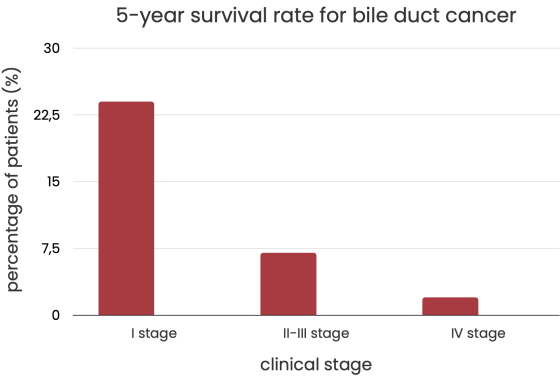
Cancer, such as cholangiocarcinoma, is an issue only if it hasn't been solved. Developing an acceptable therapy strategy now demands so much information that even the most skilled physician can't absorb, process, weigh, and apply everything up to date. It's hard to understand 30 million scientific publications, 60,000 clinical studies, and 6 million gene alterations in the context of 1200 medications.
This task requires medical IT decision support systems.
AiroMedical will assist you in choosing a medical facility, specialists, and cholangiocarcinoma treatment. Only a patient-specific approach and the proper strategy allow for recovery.
References:
- American Cancer Society: Surgery for Bile Duct Cancer
- American Cancer Society: Survival Rates for Bile Duct Cancer
- NHS inform: Bile duct cancer (cholangiocarcinoma)
- NHS : Bile duct cancer (cholangiocarcinoma)
- eMedicineHealth: What Is the Survival Rate of Cholangiocarcinoma?
- MedicineNet: Bile duct cancer (cholangiocarcinoma)
- Cancer.Net: Bile Duct Cancer (Cholangiocarcinoma): Types of Treatment
